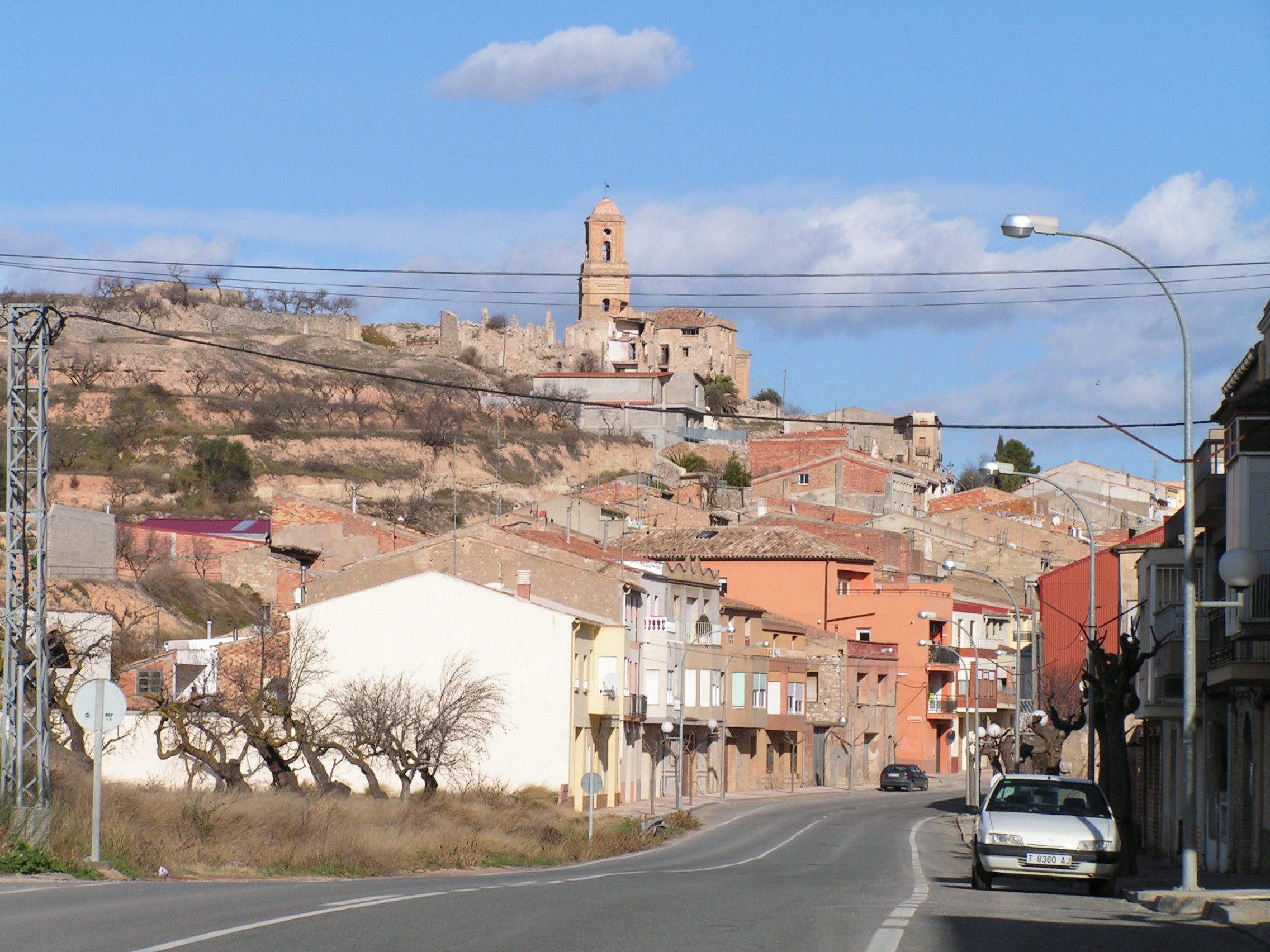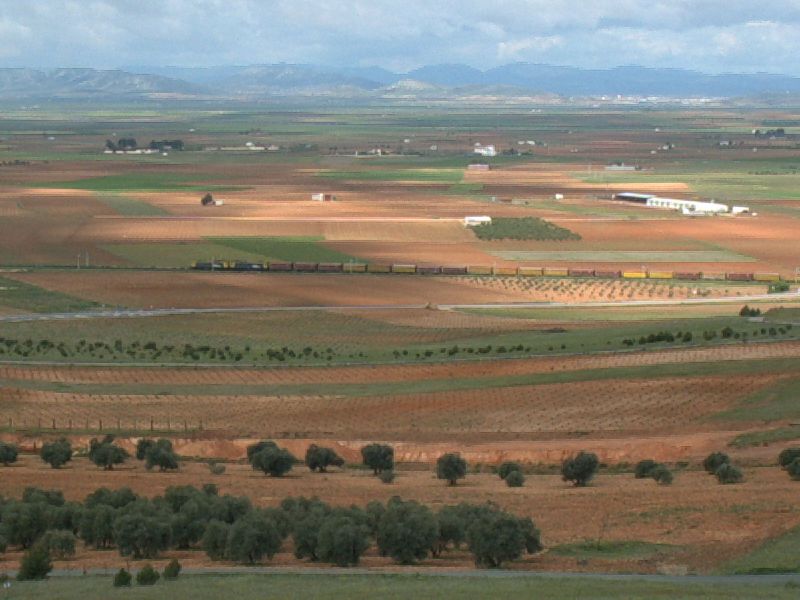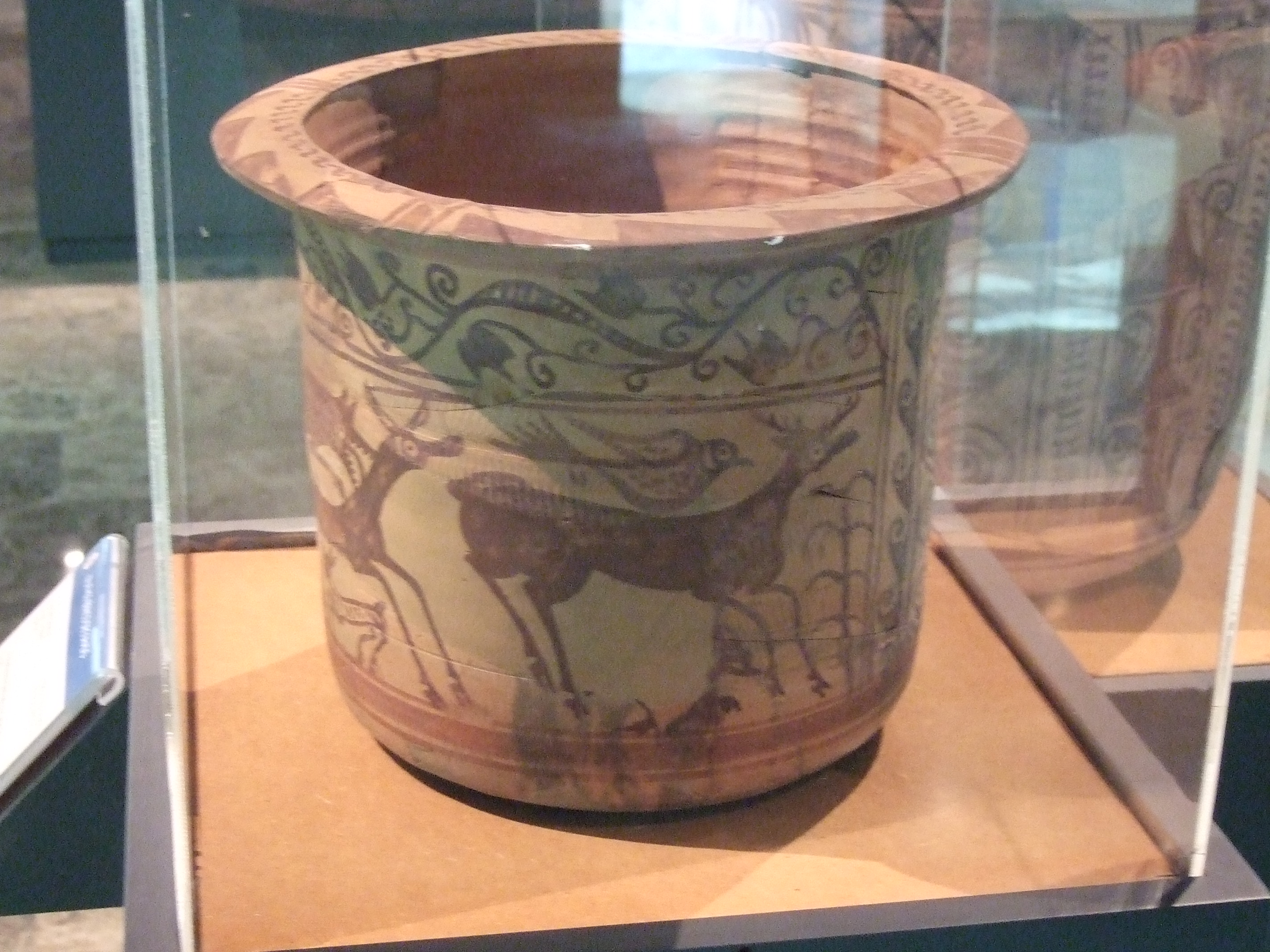|
153rd Mixed Brigade
The 153rd Mixed Brigade was a unit of the Spanish Civil War that took part in the Spanish Civil War. Formed around the old Land and Freedom Column, the unit took part in the battles of Belchite, Aragon and Segre. History The unit was created in June 1937, in the Aragon front, from the militarization of the Land and Freedom Column. It was also joined by elements of various origins, such as the "Battalion of Death" or former POUMists of the 29th Division. Antonio Seba Amorós was appointed to the head of the unit, while the anarchist Francisco Sener Martín was appointed political commissioner. During the first months it went through a training period. Later, the 153rd Mixed Brigade was integrated into the 24th Division of the 12th Army Corps. The unit took part in the Battle of Belchite. Stationed in the rear, in Caspe, the 153rd MB was called to intervene in the new Zaragoza Offensive. After having some difficulties, on 28 August it managed to penetrate Belchite by the Medi ... [...More Info...] [...Related Items...] OR: [Wikipedia] [Google] [Baidu] |
Republican Faction (Spanish Civil War)
The Republican faction ( es, Bando republicano), also known as the Loyalist faction () or the Government faction (), was the side in the Spanish Civil War of 1936 to 1939 that supported the government of the Second Spanish Republic against the Nationalist faction of the military rebellion. The name Republicans () was mainly used by its members and supporters, while its opponents used the term ''Rojos'' (Reds) to refer to this faction due to its left-leaning ideology, including far-left communist and anarchist groups, and the support it received from the Soviet Union. At the beginning of the war, the Republicans outnumbered the Nationalists by ten-to-one, but by January 1937 that advantage had dropped to four-to-one. Foreign support The Republican faction hardly received external support from the Allied powers of World War II, due to the International Non-Intervention Committee. The support of the USSR stands out, fundamentally. Together with Mexico, France and Poland at the ... [...More Info...] [...Related Items...] OR: [Wikipedia] [Google] [Baidu] |
Zaragoza Offensive
The Zaragoza Offensive took place during the Spanish Civil War in 1937. This battle involved the Spanish Republican Army. The main goal of the offensive was to occupy the city of Zaragoza. The main action of the offensive was the battle of Belchite. Background In August 1937, the commander in chief of the Republican Army, Vicente Rojo, decided to launch an offensive in the Aragon front in order to take the regional capital, Saragossa. The main goal of the offensive was to stop the Nationalist offensive against Santander. Furthermore, Saragossa was the communications centre of the whole Aragon front. Opposing forces In the Aragon front the Republican Army had deployed the Army of the East, led by the general Pozas and his chief of staff Antonio Cordon. This army had six divisions ( Lister's 11th Division, 26th Division, 27th Division, Walter's 35th Division, 43rd Division; and Kleber's 45th Division). Furthermore, the Republicans had 200 aircraft and many T-26 and BT-5 ta ... [...More Info...] [...Related Items...] OR: [Wikipedia] [Google] [Baidu] |
Catalonia Offensive
The Catalonia Offensive ( ca, Ofensiva de Catalunya, es, Ofensiva de Cataluña) was part of the Spanish Civil War. The Nationalist faction (Spanish Civil War), Nationalist Army started the Offensive (military), offensive on 23 December 1938 and rapidly conquered Second Spanish Republic, Republican-held Catalonia with Barcelona (the Republic's capital city from October 1937). Barcelona was captured on 26 January 1939. The Republican government headed for the French border. Thousands of people fleeing the Nationalists (Spain), Nationalists also crossed the frontier in the following month, to be placed in internment camps. Francisco Franco, Franco closed the border with France by 10 February 1939. Background After its defeat at the Battle of the Ebro the Spanish Republican Army, Republican Army was broken and would never recover. The Republicans had lost most of their armament and experienced units. Furthermore, in October 1938 the Republican government agreed to withdraw the volu ... [...More Info...] [...Related Items...] OR: [Wikipedia] [Google] [Baidu] |
Battle Of The Ebro
The Battle of the Ebro ( es, Batalla del Ebro, ca, Batalla de l'Ebre) was the longest and largest battle of the Spanish Civil War and the greatest, in terms of manpower, logistics and material ever fought on Spanish soil. It took place between July and November 1938, with fighting mainly concentrated in two areas on the lower course of the Ebro River, the Terra Alta comarca of Catalonia, and the Auts area close to Fayón ''(Faió)'' in the lower Matarranya, Eastern Lower Aragon. These sparsely populated areas saw the largest array of armies in the war. The battle was disastrous for the Second Spanish Republic, with tens of thousands left dead or wounded and little effect on the advance of the Nationalists. Background By 1938, the Second Spanish Republic was in dire straits. The Republican Northern zone had fallen, and in the winter of 1937/38 the Republican Popular Army had spent its forces in the Battle of Teruel, a series of bloody combats in subzero temperatures aroun ... [...More Info...] [...Related Items...] OR: [Wikipedia] [Google] [Baidu] |
Segre River
The Segre ( or ; french: Sègre) is a river tributary to the Ebro (''Ebre'' in Catalan) with a basin comprising territories across three states: France, Andorra and Spain. The river Segre, known to Romans and Greeks as Sicoris, and to the Arabs of Al-Andalus as Nahr az-Zaytūn (نهر الزيتون, river of Olives) has its sources on the north face of the Pic del Segre or ''Puigmal de Segre'' ("Segre's Peak") in the French department Pyrénées-Orientales (historically the ''comarca'' of Alta Cerdanya), in the Catalan Pyrenees. It follows a western direction all along the Cerdanya (''Cerdagne'') Valley, and crosses the town Saillagouse, the Spanish exclave Llívia and Bourg-Madame. It enters Spain at Puigcerdà and continues west until La Seu d'Urgell, where it meets the Valira River coming from Andorra. From this point it adopts a south-western course across the pre-Pyrenees (with several dams along its gorges) and the western plains of Catalonia. It passes thro ... [...More Info...] [...Related Items...] OR: [Wikipedia] [Google] [Baidu] |
3rd Mixed Brigade
The 3rd Mixed Brigade ( es, 3.ª Brigada Mixta), was one of the earliest mixed brigades of the Spanish Republican Army in the Spanish Civil War. It was formed in the fall of 1936 with battalions of the ''Carabineros'' corps and saw major action right away in the Defence of Madrid. This brigade also included female combatants —such as Sergeant ''"La Chata"''— and would take part in most of the major battles of the Spanish Civil War, except in the Battle of Jarama. The brigade's first leader was ''Carabineros'' Lieutenant —later Commander— José María Galán, brother of Fermín Galán, leader of the Jaca Uprising, and of Francisco Galán.Carlos Engel, ''Historia de las Brigadas Mixtas del E. P. de la República'', 1999 The mouthpiece of this military unit was the ''"Tercera Brigada"'' newspaper. The Third Mixed Brigade is mentioned in the lyrics of ''Si me quieres escribir'', one of the most famous songs of the Spanish Republican troops during the Civil War. History E ... [...More Info...] [...Related Items...] OR: [Wikipedia] [Google] [Baidu] |
Vilanova De La Barca
Vilanova de la Barca (Officially and in Catalan; es, Villanueva de la Barca) is a municipality in the ''comarca'' of Segrià in Catalonia, Spain. It is situated at the confluence of the Segre and Corb rivers. The Urgell canal provides irrigation water for growing cereals and forage plants. The municipality is linked to Lleida and Balaguer Balaguer () is the capital of the ''comarca'' of Noguera, in the province of Lleida, Catalonia, Spain. It is located by the river Segre, a tributary to the Ebre. The municipality includes an exclave to the east. Balaguer also has a sister city ... by the C-1313 road and a FGC railroad. Demography References * Panareda Clopés, Josep Maria; Rios Calvet, Jaume; Rabella Vives, Josep Maria (1989). ''Guia de Catalunya'', Barcelona: Caixa de Catalunya. (Spanish). (Catalan). External linksOfficial website Government data pages Municipalities in Segrià Populated places in Segrià {{Lleida-geo-stub ... [...More Info...] [...Related Items...] OR: [Wikipedia] [Google] [Baidu] |
11th Army Corps (Spain)
The XI Army Corps was a military formation belonging to the Spanish Republican Army that fought during the Spanish Civil War. During the war it was deployed on the fronts of Aragon, Segre and Catalonia. History The unit was created in June 1937, within the Eastern Army. It was made up of the divisions 26th, 27th and 32nd, having its headquarters in Sariñena. It covered the front line that ran from the south of Huesca —in union with the X Army Corps – to the Ebro river – where, in turn, it united with the XII Army Corps. During the following months some of its forces intervened in the Zaragoza and Belchite offensives, which, however, did not bear the desired results. In the spring of 1938, during the Aragon campaign, the forces of the XI Army Corps were unable to cope with the pressure of the nationalist units. By early April, the remnants of the army corps had established their positions along the defensive line of the Segre river. During the following months it did ... [...More Info...] [...Related Items...] OR: [Wikipedia] [Google] [Baidu] |
30th Division (Spain)
30th Division may refer to: Infantry units * 30th Division (1st Formation)(People's Republic of China), 1949–1952 * 30th Division (German Empire) * 30th Reserve Division (German Empire) * 30th Infantry Division (Wehrmacht), Germany * 30th Waffen Grenadier Division of the SS, Germany * 30th Infantry Division Sabauda, Kingdom of Italy * 30th Division (Imperial Japanese Army) * 30th Infantry Division (Poland) * 30th Rifle Division, Soviet Union * 30th Division (United Kingdom) * 30th Infantry Division (United States) * 30th Division (Yugoslav Partisans), 1943–1945 Other units * 30th Armored Division (United States) * 30th Cavalry Division (Soviet Union) * 30th Division (Syria), established 2017 * Division 30, a 2015 Syrian rebel group See also * List of military divisions by number * 30th Army (other) * 30th Battalion (other) * 30th Brigade (other) * XXX Corps (other) 30th Corps, Thirtieth Corps, or XXX Corps may refer to: *XXX Corps ( ... [...More Info...] [...Related Items...] OR: [Wikipedia] [Google] [Baidu] |
Autonomous Group Of The Ebro
In developmental psychology and moral, political, and bioethical philosophy, autonomy, from , ''autonomos'', from αὐτο- ''auto-'' "self" and νόμος ''nomos'', "law", hence when combined understood to mean "one who gives oneself one's own law" is the capacity to make an informed, uncoerced decision. Autonomous organizations or institutions are independent or self-governing. Autonomy can also be defined from a human resources perspective, where it denotes a (relatively high) level of discretion granted to an employee in his or her work. In such cases, autonomy is known to generally increase job satisfaction. Self-actualized individuals are thought to operate autonomously of external expectations. In a medical context, respect for a patient's personal autonomy is considered one of many fundamental ethical principles in medicine. Sociology In the sociology of knowledge, a controversy over the boundaries of autonomy inhibited analysis of any concept beyond relative auton ... [...More Info...] [...Related Items...] OR: [Wikipedia] [Google] [Baidu] |
Herrera De Los Navarros
Herrera de los Navarros ( an, Ferrera de los Navarros) is a municipality located in the province of Zaragoza, Aragon, Spain. According to the 2004 census (INE INE, Ine or ine may refer to: Institutions * Institut für Nukleare Entsorgung, a German nuclear research center * Instituto Nacional de Estadística (other) * Instituto Nacional de Estatística (other) * Instituto Nacional Ele ...), the municipality has a population of 634 inhabitants. References Municipalities in the Province of Zaragoza {{Zaragoza-geo-stub ... [...More Info...] [...Related Items...] OR: [Wikipedia] [Google] [Baidu] |
Azuara
Azuara is a municipality located in the province of Zaragoza, Aragon, Spain. According to the 2010 census the municipality has a population of 220 inhabitants.Instituto Nacional de Estadística (Spain) Its postal code is 50140 Cueva del Cabuchico is an ancient Iberian archaeological site near Azuara. See also *Azuara impact structure *Jiloca Comarca *List of municipalities in Zaragoza This is a list of the municipalities in the province of Zaragoza (Saragossa in English) in the autonomous community of Aragon, Spain. There are 293 municipalities in the province. See also List of Aragonese comarcas. See also *Geography of ... References External links Azuara site Municipalities in the Province of Zaragoza {{Zaragoza-geo-stub ... [...More Info...] [...Related Items...] OR: [Wikipedia] [Google] [Baidu] |


